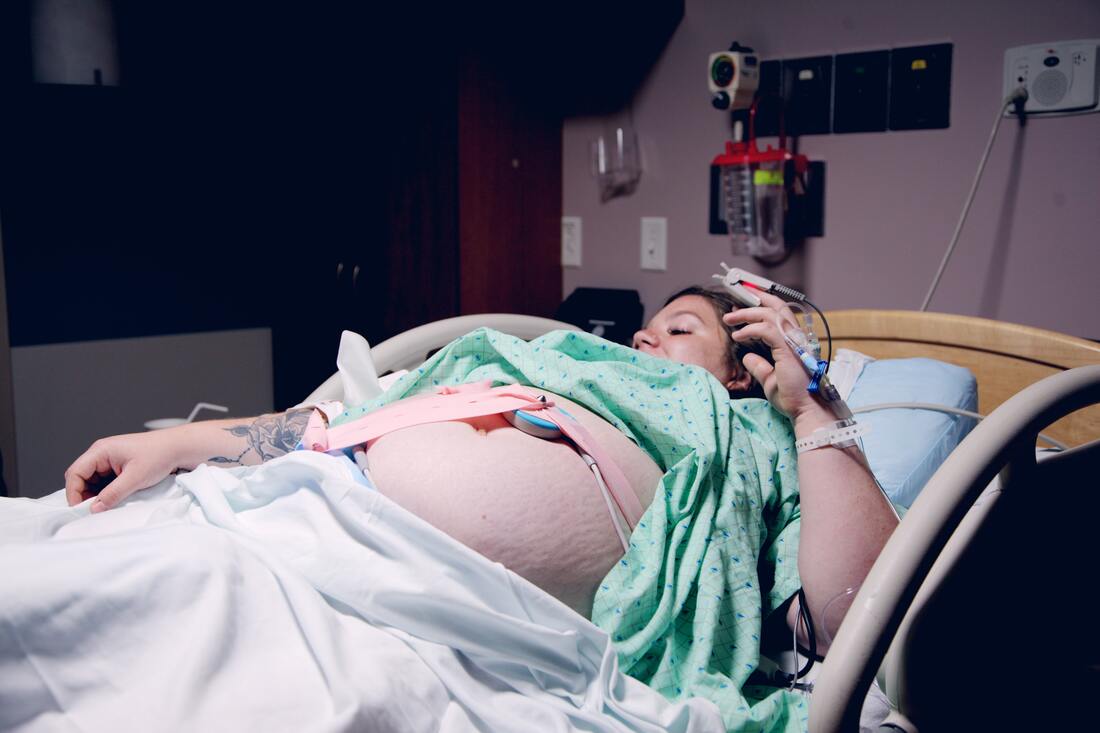|
Under the guise of health and safety... choice is removed from birth. Birth is a really unique time for families. Often, this is your first step into the medical system. But the tricky thing with birth is you know that the choices you are making are not just about your body and your health, they are about the health of your baby who you already love so powerfully. You want to trust that the professionals know what they are doing so you go with the flow with whatever they tell you needs to happen. Because after all, they are doing this for your health and safety. But is it really about your health and safety? Or is it control and liability? Have you ever wondered why and how policies and procedures were made in the hospital or with the care providers you are birthing with? Often, it is put under "health and safety" for you and for your baby, but so much of what is typical and standard practice is not actually so. 1. Not eating and drinking during your birth for your health and safety in case you need a csection. TRUTH: there is no evidence to support restrictions on what you eat or drink in a typical labor and restrictions can actually cause labor to be longer and more painful. Food and drinks are often restricted because of risk of aspiration in case of a csection. The risk of death as a result of aspiration during Cesarean was 0.7 per million births, or 1 death for every 1.4 million births (Hawkins et al. 1997) Learn more here: evidencebasedbirth.com/evidence-eating-drinking-labor/ 2. Cervical exams and sweeps during pregnancy For many providers, cervical exams and sweeps are a standard part of the final weeks of pregnancy. They do this to see how dilated your cervix is and if dilated enough, they "sweep" your cervix to try to help labour get started. Here's the thing about vaginal exams - they are only a moment in time and particularly during pregnancy, they do not give any insight into what to expect in the coming days or even hours. You could be walking around dilated at 3cm for 3 weeks or you could be completely closed in the morning and have your baby that night. There is no benefit doing weekly exams. And as for sweeps - well it is simply not very effective, not to mention quite painful for most people. Learn more here: evidencebasedbirth.com/updated-evidence-on-the-pros-and-cons-of-membrane-sweeping/ 3. Low risk people birthing in the hospital One of the biggest beliefs is that the safest place to give birth is in a hospital when home birth is actually as safe (or even safer) for low risk birthing people in well resourced countries. Learn more here: https://www.sciencedaily.com/releases/2019/08/190807190818.htm www.ontariomidwives.ca/home-birth-safety 4. Induction of labour for non-medical reasons (this includes going post-dates) At the start of your pregnancy, you are given a due date but it is important to remember that this isn't an expiration date. The most common pressure you will receive is if you continue to be pregnant beyond this date. Do you know what the average gestation actually is for a first time birther? 41 weeks and 1 day. Why then do our local hospitals induce at 41 weeks or 41.1? When this is just average - not late? It’s important to keep in mind that most postdates pregnancies are not associated with major or long-term complications. While the risk of certain complications is higher, the overall risk is still low. We hear all the time the risk of going post dates, but what about the risks of induction? It is for you to decide what risks you are comfortable with. They are not allowed to not allow you. Here's a good breakdown for you: www.ontariomidwives.ca/sites/default/files/2021-05/KT-When-your-pregnancy-goes-past-your-due-date-English.pdf 5. Routine use of Continuous Electronic Fetal Monitoring Continuous EFM was introduced in the 1970's with out any evidence from clinical trials - only with a great marketing campaign. The messaging was that if you can listen to what is happening with the baby at all time, you would be able to stop fetal distress and act faster when needed. Makes sense right? Except, after almost 40 years of use, it is still lacking evidence of the benefits of use. Now EFM is used in 90% of births. The rates of morbidity and mortality have not changed, but the rate of c-section has raised with the use of EFM - from 5% in 1970 to now being about 40% in BC. Here's more reading for you: evidencebasedbirth.com/fetal-monitoring/ 6. Pushing on your back The most common position people birth their babies in is on their back - despite that fact that so much supports upright positions are the most ideal. When laying on your back, you put weight on your tailbone and make your opening significantly smaller, making it much harder to get a baby out - raising your chance for needing an assisted delivery and cause damage to your pelvic floor. So why then is it the most commonly used? Well, because it is the most comfortable for your care provider to catch your baby. More for you here: https://evidencebasedbirth.com/evidence-birthing-positions/ 7. Water birth bans While many places encourage hydrotherapy during labour with the use of a shower or a tub, many institutions are not supportive of water birth. In the Fraser Health region, water birth is banned and I have personally seen nurses physically pull a birthing person out of a tub when they are already pushing. This is assault and very dangerous. If babies all across the Fraser Valley are born in the water at home, why is it banned to birth in the water in the hospital? While the studies are inconclusive, the existing studies suggest that birthing in water is a safe option for birthing people with healthy pregnancies and uncomplicated labours. Currently, the only hospital the supports the choice of water birth in our area is BC Women's Hospital - where this happens consistently. This is a great resource from Pomegranate Midwives: http://www.pomegranate-midwives.com/resources/birth/waterbirth/ 8. Routine use of Erythromycin antibiotics for newborn Within the first hour of birth, an antibiotic gel is applied routinely onto newborn babies eyes. The purpose of this is to prevent ophthalmia neonatorum, ie pink eye, if the baby has been exposed to chlamydia or gonorrhoeae from the birthing parent. This is recommended by the hospital even if you have been screened and do not have either. The Canadian Pediatric Association of Canada, in 2015, put out a statement saying that routine use of the antibiotics is not recommended - however, 6 years later, it continues to be offered to all birthing people in Canada. In BC, we are easily able to decline (though this involved the care provider having an informed choice conversation - many babies continue to receive this treatment because of lack of information) but in other provinces, they are not able to legally decline. Here's a news report covering this topic: www.cbc.ca/news/health/newborn-eye-treatment-doesn-t-work-say-pediatricians-who-want-law-repealed-1.3000350 These are just 8 examples of when "health and safety" is given as a reason for something being offered when really, the risk is actually very low, or the evidence does not support the practice. When abuse and trauma is wiped away with "a healthy baby is all that matters", you realize how little our system actually cares for birthing families and how talented they are in making those families believe they were saved by the system, not exploited by it. The thing I hate the MOST about this is that it takes advantage of birthing families emotions, it leads health care choices with fear and not truth, and it allows care providers to manipulate the situation to get their way. So next time something is offered to you under the guise of health and safety, I encourage you to stop, ask questions, assess the information and decide for yourself. Is this for your health and safety? Or is this for their control and liability?
1 Comment
Shannon
8/19/2021 07:37:38 pm
Good for you Sam for telling TRUTHS. Sometimes the truth hurts.
Reply
Leave a Reply. |
AuthorSamantha Garcia Gagnon is a birth worker in Pitt Meadows, British Columbia. She has a special focus on supporting physiologic home births and shares her years of experience and knowledge in this blog. Archives
August 2021
Categories
All
|
|
Proudly supporting postpartum families in Pitt Meadows, Maple Ridge, Port Coquitlam, Coquitlam. Port Moody, Langley,
Surrey and New Westminster. Filled with gratitude to be living and working in the unceded and ancestral home of the Katzie, Kwikwetlem, Matsqui, Kwantlen, and Semiahmoo First Nations. |
© SAMANTHA GAGNON BIRTH WORKER 2021. ALL RIGHTS RESERVED.



 RSS Feed
RSS Feed
